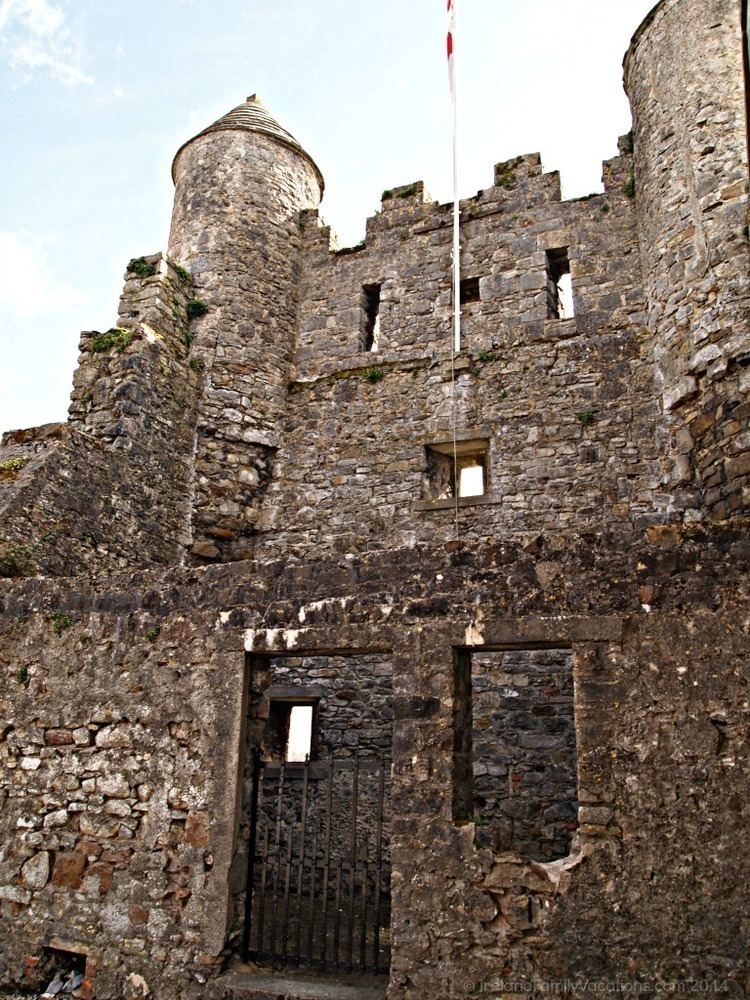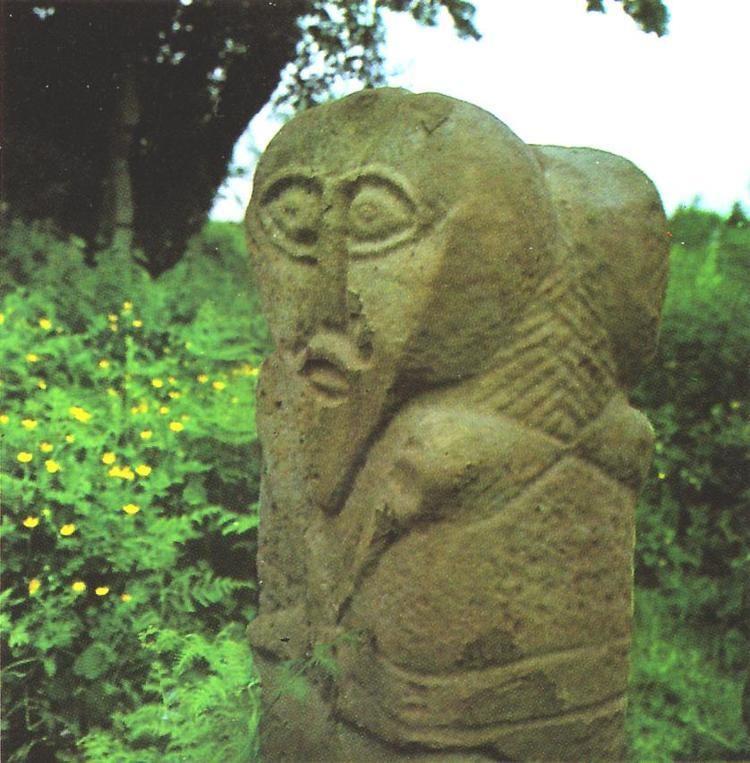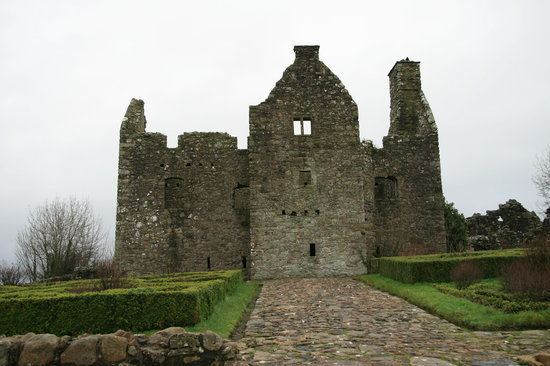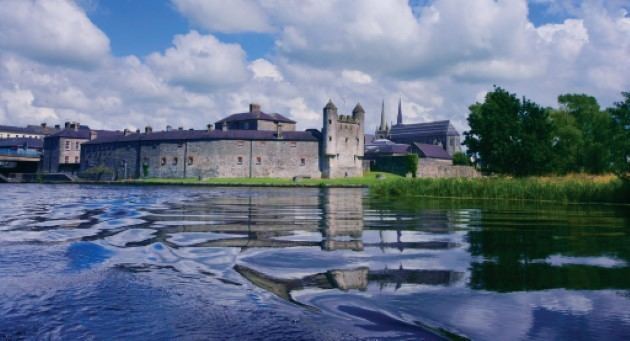Province Ulster Region Northern Ireland | Capital Enniskillen Area 715 sq mi Population 28th | |
 | ||
Points of interest Devenish Island, Boa Island, Ardhowen Theatre, Lusty Beg Island, Ulster Canal | ||
University South West College, Enniskillen | ||
Map of County Fermanagh
County Fermanagh ( ; from Irish: Fir Manach or Fear Manach, meaning "men of Manach") is one of the six counties of Northern Ireland. The county covers an area of 1,691 km² (653 sq mi) and has a population of about 61,805. Enniskillen is the county town and largest in both size and population. It is also one of the thirty-two traditional counties of Ireland, as well as part of the historic province of Ulster.
Contents
- Map of County Fermanagh
- A taste of fermanagh lakelands recreation activities
- Aris place 229 roncesvalles ave at fermanagh ave toronto on 416 533 0100
- Geography
- History
- Administration
- Industry and tourism
- Large towns
- Medium towns
- Small towns
- Intermediate settlements
- Villages
- Small villages or hamlets
- Subdivisions
- Media
- Sport
- Notable people
- Surnames
- References

Fermanagh is one of four counties of Northern Ireland to have a majority of its population from a Catholic background, according to the 2011 census.

A taste of fermanagh lakelands recreation & activities
Aris place 229 roncesvalles ave at fermanagh ave toronto on 416 533 0100
Geography

Fermanagh borders County Tyrone to the north-east, County Monaghan to the south-east, County Cavan to the south-west, County Leitrim to the west and County Donegal to the north-west. The county town, Enniskillen, is the largest settlement in Fermanagh, situated in the middle of the county.

It is mainly rural and is situated largely in the basin of the River Erne. It is dominated by two connected lakes: Upper and Lower Lough Erne, and, including water, spans an area of 1,851 km² (715 sq; mi). It is approximately 120 km (75 mi) from Belfast and 160 km (99 mi) from Dublin.

Fermanagh accounts for 13.2% of land mass of Northern Ireland and 30% of Fermanagh is covered with lakes and waterways.
History

The Menapii are the only known Celtic tribe specifically named on Ptolemy’s 150 AD map of Ireland, where they located their first colony- Menapia – on the Leinster coast circa 216 BC. They later settled around Lough Erne, becoming known as the Fir Manach, and giving their name to Fermanagh and Monaghan. Mongán mac Fiachnai, a 7th century King of Ulster, is the protagonist of several legends linking him with Manannán mac Lir. They spread across Ireland, evolving into historic Irish (also Scottish and Manx) clans.
The Annals of Ulster which cover medieval Ireland between AD 431 to AD 1540 were written at Belle Isle on Lough Erne near Lisbellaw.
Fermanagh was a stronghold of the Maguire clan and Donn Carrach Maguire (died 1302) was the first of the chiefs of the Maguire dynasty. However, on the confiscation of lands relating to Hugh Maguire, Fermanagh was divided in similar manner to the other five escheated counties among Scottish and English undertakers and native Irish. The baronies of Knockninny and Magheraboy were allotted to Scottish undertakers, those of Clankelly, Magherastephana and Lurg to English undertakers and those of Clanawley, Coole, and Tyrkennedy, to servitors and natives. The chief families to benefit under the new settlement were the families of Cole, Blennerhasset, Butler, Hume, and Dunbar.
Fermanagh was made into a county by statute of Elizabeth I, but it was not until the time of the Plantation of Ulster that it was finally brought under civil government.
The closure of all the lines of Great Northern Railway (Ireland) within County Fermanagh in 1957 left the county as the first non-island county in the UK without a railway service.
Administration
With the creation of Northern Ireland's district councils, Fermanagh District Council the only one of the 26 that contained all of the county from which it derived its name. After the re-organisation of local government in 2015, Fermanagh was still the only county wholly within one council area, namely Fermanagh and Omagh District Council, albeit that it constituted only a part of that entity.
For the purposes of elections to the UK Parliament, the territory of Fermanagh is part of the Fermanagh and South Tyrone Parliamentary Constituency. This constituency is renowned for high levels of voting and for electing Provisional IRA hunger-striker Bobby Sands as a member of parliament in the Fermanagh and South Tyrone by-election, April 1981, shortly before his death.
Industry and tourism
Agriculture and tourism are two of the most important industries in Fermanagh. The main types of farming in the area are beef, dairy, sheep, pigs and some poultry. Most of the agricultural land is used as grassland for grazing and silage or hay rather than for other crops.
The waterways are extensively used by cabin cruisers, other small pleasure craft and anglers. The main town of Fermanagh is Enniskillen (Inis Ceithleann, 'Ceithleann's island'). The island town hosts a range of attractions including the Castle Coole Estate and Enniskillen Castle, which is home to the museum of The Royal Inniskilling Fusiliers and the 5th Royal Inniskilling Dragoon Guards.
Attractions outside Enniskillen include:
Large towns
(population of 18,000 or more and under 75,000 at 2001 Census)
Medium towns
(population of 10,000 or more and under 18,000 at 2001 Census)
Small towns
(population of 4,500 or more and under 10,000 at 2001 Census)
Intermediate settlements
(population of 2,250 or more and under 4,500 at 2001 Census)
Villages
(population of 1,000 or more and under 2,250 at 2001 Census)
Small villages or hamlets
(population of less than 1,000 at 2001 Census)
Subdivisions
Baronies
Parishes
Townlands
Media
Newspapers
Sport
Fermanagh GAA has never won a Senior Provincial or an All-Ireland title in any Gaelic games.
Only Ballinamallard United F.C. take part in the Northern Ireland football league system. All other Fermanagh clubs play in the Fermanagh & Western FA league systems. Fermanagh Mallards F.C. played in the Women's Premier League until 2013. Famous Football players from Fermanagh include Roy Carroll, Harry Chatton, Barry Owens and Kyle Lafferty.
Notable people
Famous people born, raised in or living in Fermanagh. (Please make additions in alphabetical order.)
Surnames
Most common surnames in County Fermanagh at the time of the United Kingdom Census of 1901:
